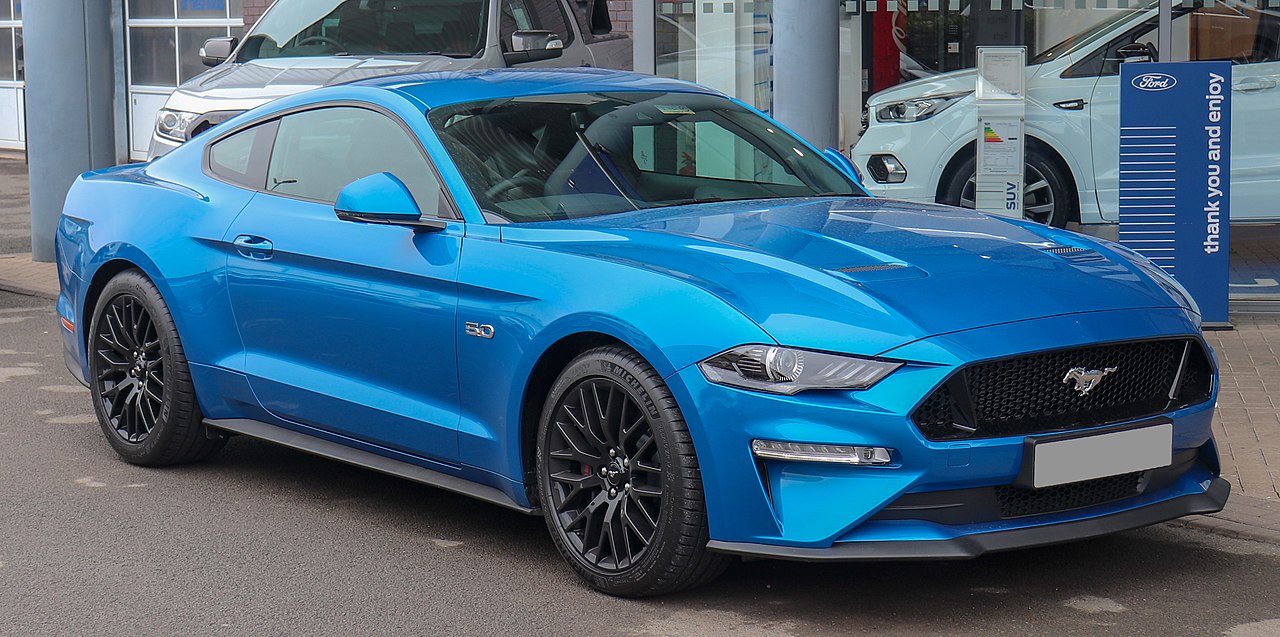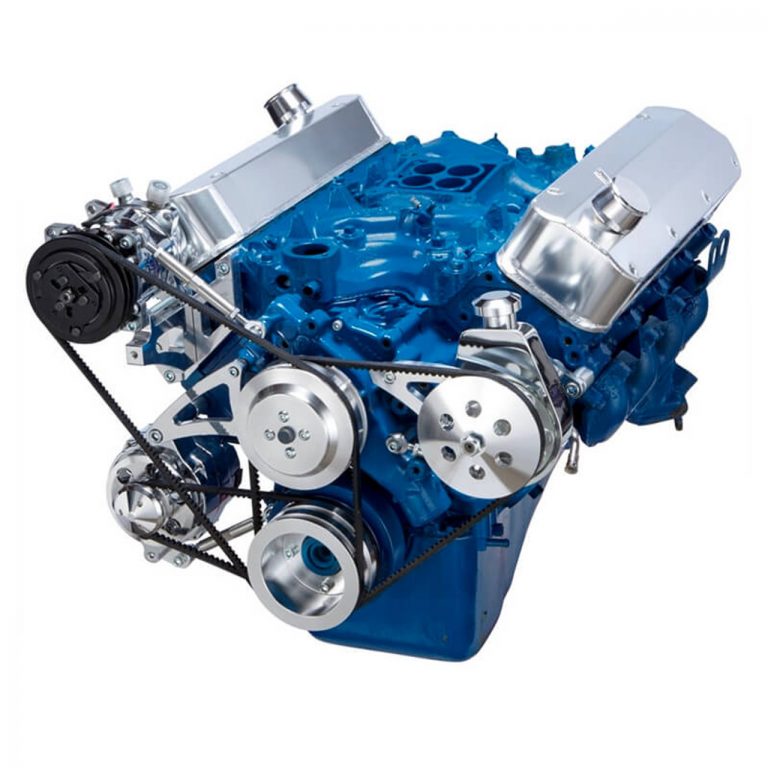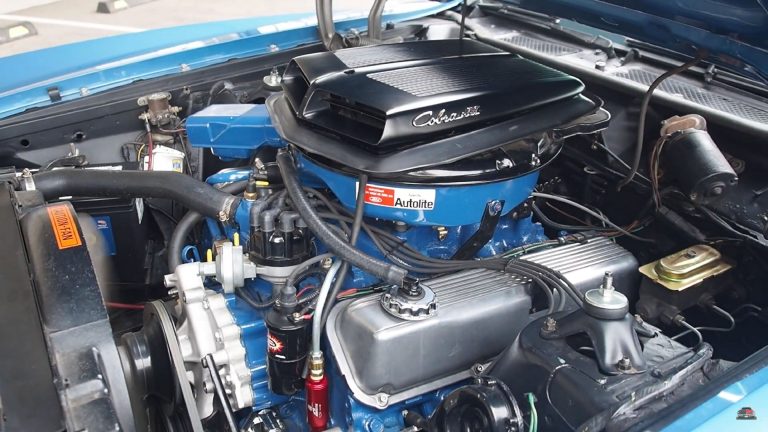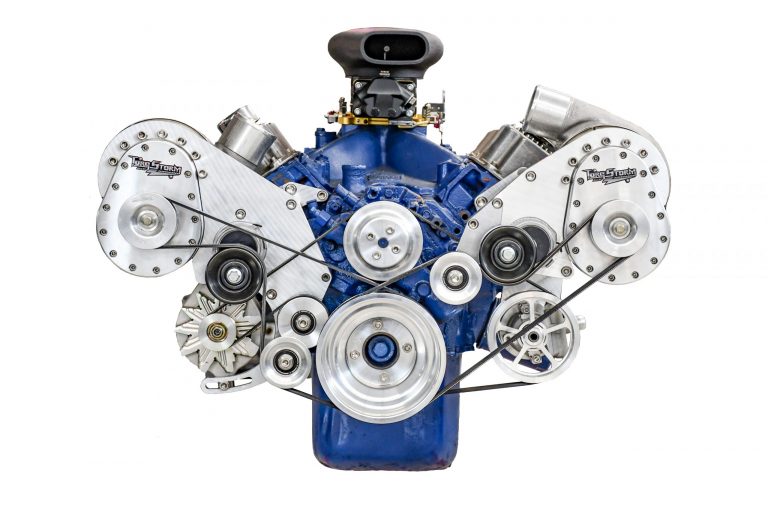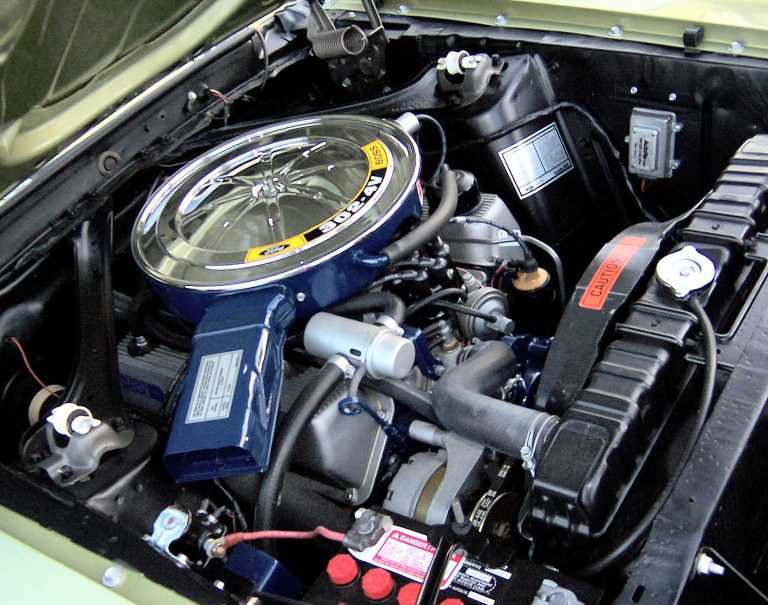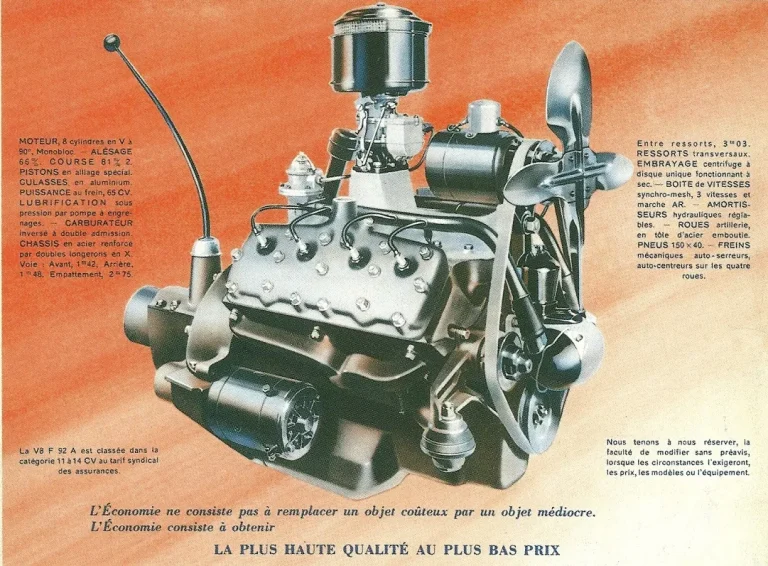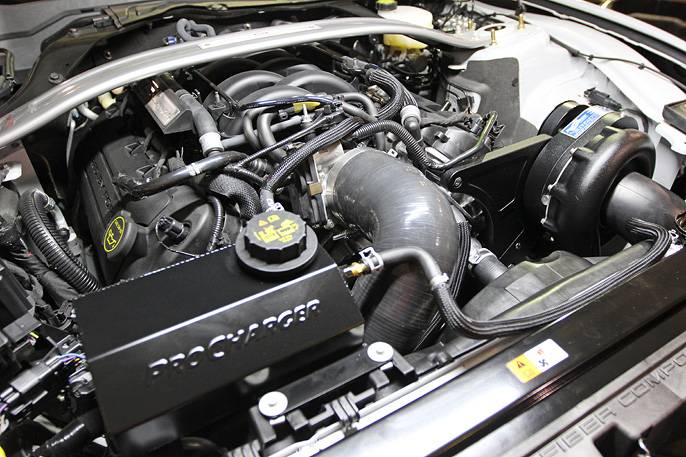Ford Mustang, 1994-2024

Meet Chandler
Chandler has a bachelors and masters degree in history as well as a passion for classics and muscle cars. His education and historical knowledge makes him skilled at crafting highly detailed articles about America’s muscle cars and automotive history. His love of muscle cars is undeniable, with him seeking them out at every opportunity during his visits to auto shows and car meets. Chandler’s knowledge and enthusiasm towards automotive history make him a great asset to the Muscle Car Club community.
For nearly 60 years, the Ford Mustang has staked its claim as America’s favorite pony car. Ford first introduced the Mustang in 1964, as a sporty new two-door coupe meant to attract the youth, and it has stayed immensely popular ever since. From the beginning, Ford made performance a priority in the Mustang, which is a legacy that has continued through today – even if it disappeared for a time in the 1970s–1980s.
The engines might be smaller now, but the horsepower is even more gargantuan. Every year, the Mustang remains one of the best selling cars on the market, and the countless special editions and Shelby and Boss variants are some of the hottest items on the market.
Ford introduced the Mustang in 1964, and it has since spanned a total of seven generations. Due to the Mustang’s incredible history, we’re splitting it up into two articles. This article will cover the most recent four generations and 30 years of the Ford Mustang, from 1994–2024. When you’re done, make sure to check out our other article on the 1964–1993 Ford Mustang, too.
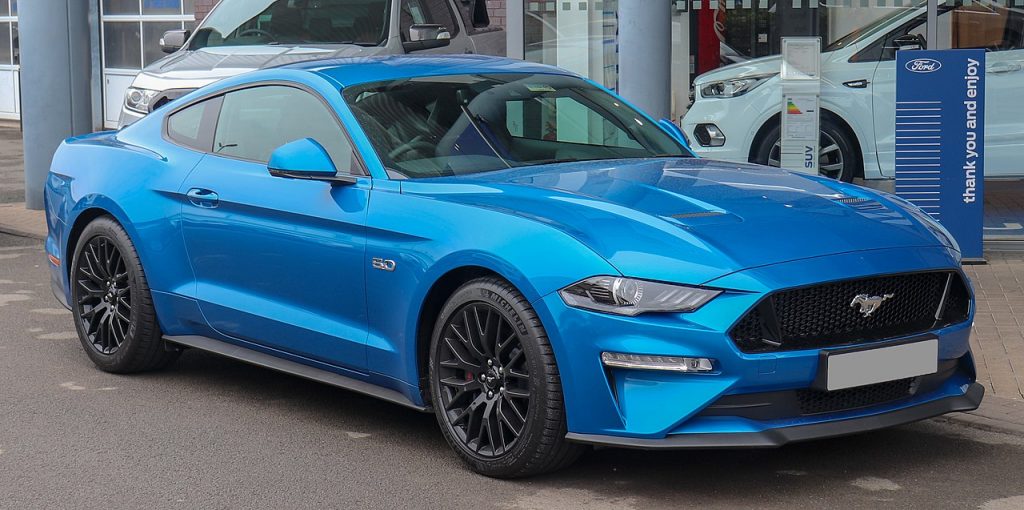
Ford Mustang, 1994–2024: Overview
The most recent three generations of the Ford Mustang span 1994–2023, with the seventh generation expected to start for the 2024 model year. Starting with the fourth generation in 1994, Ford finally began to bring performance back to the Mustang, which had been lacking for years. The Special Vehicle Team (SVT) variants were ultra powerful for the time, and even the standard Mustang and Mustang GT got nice power bumps. By the sixth generation, the Mustang had become one of the most powerful production cars on the market, and that doesn’t even count the Shelby and Boss variants.
The fourth generation of the Ford Mustang lasted from 1994–2004, and saw the Mustang receive a significant redesign of the Fox Body platform. Special editions included the SVT Cobra and Cobra R, as well as reappearance of the Bullitt and Mach 1 Mustangs.
The fifth generation lasted from 2005-2014, and the Mustang ditched the Fox Body for Ford’s new D2C platform. This generation also saw the return of Shelby American Mustangs, which started with no less than five different variants for 2007.
The Present and Future Mustangs
The current generation of the Mustang began in 2015 and is set to conclude with the end of the 2023 model year. During this generation, the Coyote continued to be the GT power plant, but Shelby also got a hold of it to create some nasty variants to push the GT350 and GT500 into unheard of levels of performance. In 2021, Ford introduced the Mach E, the first electric Mustang and first Mustang SUV ever.
The seventh generation of the Mustang will begin in 2024, and details are still somewhat sparse. However, it looks to be an even more powerful and sleeker version of the sixth generation. Ford has also announced a special Dark Horse Mustang, which looks like it will replace the Mach 1 as the new high performance variant.
Fourth Generation Ford Mustang (SN95)

The fourth generation Mustang used the SN95 codename and lasted from 1994–2004. Ford took input from customers around the country when redesigning the Fox Body platform for the new generation. Officially called the Fox-4 platform, many people saw it as a return to form for the Mustang. The new platform was technically still a Fox Body, but shared only the floorpan from the previous generation.
Ford brought back the galloping Mustang logo, which they put front and center above the grille, and they added hood scoops and side skirt scoops ahead of the rear tires. The platform was much more rigid and stiff compared with years prior, and also had new curves and lines aimed at being more aerodynamic. They also made power-assisted four-wheel disc brakes standard and added anti-roll bars up front for handling.
In 1994, Customers could buy either a coupe or convertible, and initially there were plans to offer a removable hardtop, but those fell through and were realized on the SVT Cobra the next year. For 1995, Ford introduced the Mustang GTS, which was basically a cheaper GT that had the same performance.
Ford made few changes visually except to the grille over the next few years, but in 1998 power windows, locks, deck lid release, and more were all made standard for the first time. For the 1999 Mustang, Ford offered a 35th Anniversary package for the GTs and gave all models special 35th Anniversary badging.
The Special Editions
Two special editions arrived in 2001 and 2003, the Bullitt and then the Mach 1. The Bullitt was an homage to the 1968 movie “Bullitt,” which featured Steve McQueen driving a ‘68 Fastback with a 390 V8 in an incredibly iconic car chase against a Dodge Charger. Compared with the standard GT, the 2001 Mustang Bullitt was lower, had stiffer suspension, red brake calipers, and a slightly more powerful V8 engine.
The Mach 1 came out in 2003, and it was slotted between the 2003 Mustang GT and 2003 Mustang SVT Cobra. It used an even more powerful version of the GT/Bullitt V8 making over 300 horsepower, and also brought back the Cobra Jet moniker for the first time since the ‘70s. It had stiffened suspension, better rubber and brakes, and a nostalgic and revamped interior.
The SVT Mustangs
In response to Chevrolet’s new LT-1 powered Z28 Camaro, Ford got the Special Vehicle Team (SVT) to create a new all-powerful Mustang to compete. Ford’s previous go at a high performance Mustang in the ‘80s was a flop with the SVO Mustang, as customer’s were not ready for a turbo-Mustang then just yet. However, the new SVT Cobras were huge successes, not least of which was due to their powerful power plants.
They got the ball rolling in 1993 with the SVT Cobra, which had a high-output 5.0 V8, and the race ready variant the SVT Cobra R. The SVT Cobra lasted for the entire fourth generation, except 2000 and 2002, and gradually got more powerful and popular. The SVT Cobra R variant appeared in 1993, 1995, and 2000, and was a track ready variant that was built for drag racing.
Ford produced a couple thousand of the SVT Cobras each year, but only a few hundred of the one-off Cobra R variants. Today the Cobra Rs regularly exceed $100,000 at auction, a far cry from their original $25,000 price.
1994–2004 Mustang Engine Technical Specification
| Model Years | Engine | Horsepower | Torque |
| 1994-1995 | 3.8L V6 | 145 horsepower | 215 lb-ft |
| 1994-1995 | 5.0L V8 (GT) | 215 horsepower | 285 lb-ft |
| 1994-1995 | 5.0L V8 (SVT Cobra) | 240 horsepower | 285 lb-ft |
| 1995 | 5.8L V8 (Cobra R) | 300 Horsepower | 365 lb-ft |
| 1996-1998 | 3.8L V6 | 150 horsepower | 215 lb-ft |
| 1996-1997 | 4.6L V8 (GT) | 215 horsepower | 285 lb-ft |
| 1996-1998 | 4.6L V8 (SVT Cobra) | 305 horsepower | 300 lb-ft |
| 1998 | 4.6L V8 (GT) | 225 horsepower | 290 lb-ft |
| 1999-2004 | 3.8L V6 | 190 horsepower | 220 lb-ft |
| 1999-2004 | 4.6L V8 (GT) | 260 horsepower | 302 lb-ft |
| 1999 | 4.6L V8 (SVT Cobra) | 320 horsepower | 317 lb-ft |
| 2000 | 5.4L V8 (SVT Cobra R) | 385 horsepower | 385 lb-ft |
| 2001 | 4.6L V8 (Bullitt) | 265 horsepower | 305 lb-ft |
| 2001 | 4.6L V8 (SVT Cobra) | 320 horsepower | 317 lb-ft |
| 2003-2004 | 4.6L V8 (Mach 1) | 305 horsepower | 320 lb-ft |
| 2003-2004 | 4.6L V8 (Supercharged) | 390 horsepower | 390 lb-ft |
Fourth Generation Engines and Performance
The fourth generation Mustang used three primary power plants, a 3.8L V6 for the base and either 4.6L or 5.0L V8s for the GT. The V6 made between 145–190 horsepower, and was the successor to the 2.3L I4 from the third generation. It was a pushrod V6 from the Ford Essex family, and produced good fuel economy but only middling performance. There was a supercharged version Ford put in the Thunderbird Super Coupe, but that never made its way into the Mustang.
From 1994–1995, Ford used the high output version of the 5.0 V8 they had used since 1986. In 1996, they introduced the 2-valve SOHC 4.6 L V8 from the Ford modular engine family. For the first two years, it still made the same 215 horsepower as the outgoing 5.0, though it ran better and was more efficient. In 1998-2004, power increased to 260 horsepower.
For the 2001 Mustang Bullitt and 2003–2004 Mustang Mach 1, Ford used variations of the modular 4.6 V8. Ford gave the Bullitt a revised exhaust which increased horsepower and reminded drivers of the iconic sounding “Bullitt” car chase.
Inside the Mach 1, however, Ford used the 4-valve DOHC aluminum-block version of the modular 4.6 V8. This was the better version of the modular 4.6, with 32 valves total, and included higher flowing heads and hotter camshafts. These differences helped the 2003-2004 Mach 1 reach 305 horsepower and 320 lb-ft of torque, and customers raved about the car’s performance.
The SVT Cobra Engines
For the high performance Mustang SVT Cobra, Ford used the 5.0 V8 from 1994–1995, but switched to the 4.6 V8 in 1996 like the Mustang GT. For the 5.0 V8, the SVT engineers used several components from the Ford Racing GT-40 engine. These included the high-flow cylinder heads and two-piece intake, which helped it make an additional 25 horsepower.
In 1996, Ford began using the 4-valve version of the DOHC 4.6 V8, the same V8 they would later put inside the Mach 1. Through 1998, the engine made 300 horsepower, which jumped to 320 horsepower in 1999 and 2001 (there was no SVT Cobra in 2000 or 2002).
For the final 2003–2004 Mustang SVT Cobra, Ford got serious about performance, slapping in a supercharged version of the modular 32-valve 4.6 V8 making 390 horsepower and 390 lb-ft of torque. It had an intercooler, aluminum heads, and an Eaton M-112 Roots-style supercharger that ran 8 PSI of boost. Ford engineers nicknamed it the “Terminator” V8, and it was the most powerful production Cobra variant ever built.
The SVT Cobra R Engines
As for the Cobra R, for 1993 it used the same engine as the standard SVT Cobra, and the increased performance came from suspension, handling, brake, and weight reduction upgrades. That changed with the 1995 Mustang SVT Cobra R, when Ford brought back the 351 Windsor V8 not seen in the Mustang since 1969. Now marketed as the 5.8L Windsor V8, it was a much updated engine with fuel injection and other modern improvements.
It was the same engine Ford used in the F-150 SVT Lightning, but had the GT-40 cylinder heads and two-piece air induction setup, higher compression ratio at 9.0:1, and a better camshaft. It made 300 horsepower and 365 lb-ft of torque.
For the final 2000 Mustang SVT Cobra R, Ford used the Triton 5.4L V8 from the same modular V8 family as the 4.6. The 5.4 inside the Cobra R was the 4-valve DOHC version, and made 385 horsepower and 385 lb-ft of torque. It used an iron block, aluminum cylinder heads, forged-steel crankshaft, forged-aluminum pistons, billet-steel connecting rods, tubular headers, a Borla exhaust, and aluminum flywheel. It was a performance machine to say the least.
Fourth Generation Ford Mustang Production Numbers
| Model Year | Bodystyle | Production Total |
| 1994 | Mustang | 67,225 |
| Mustang GT | 55,973 | |
| 1994 Total | 123,198 | |
| 1995 | Mustang | 186,986 |
| 1996 | Mustang | 86,079 |
| Mustang GT | 49,541 | |
| 1996 Total | 135,620 | |
| 1997 | Mustang | 78,467 |
| Mustang GT | 29,877 | |
| 1997 Total | 108,344 | |
| 1998 | Mustang | 129,709 |
| Mustang GT | 45,813 | |
| 1998 Total | 175,522 | |
| 1999 | Mustang | 100,304 |
| Mustang GT | 33,333 | |
| 1999 Total | 133,637 | |
| 2000 | Mustang | 215,383 |
| 2001 | Mustang | 163,818 |
| 2002 | Mustang | 145,518 |
| 2003 | Mustang | 150,895 |
| 2004 | Mustang | 159,587 |
Fifth Generation Ford Mustang (S197)
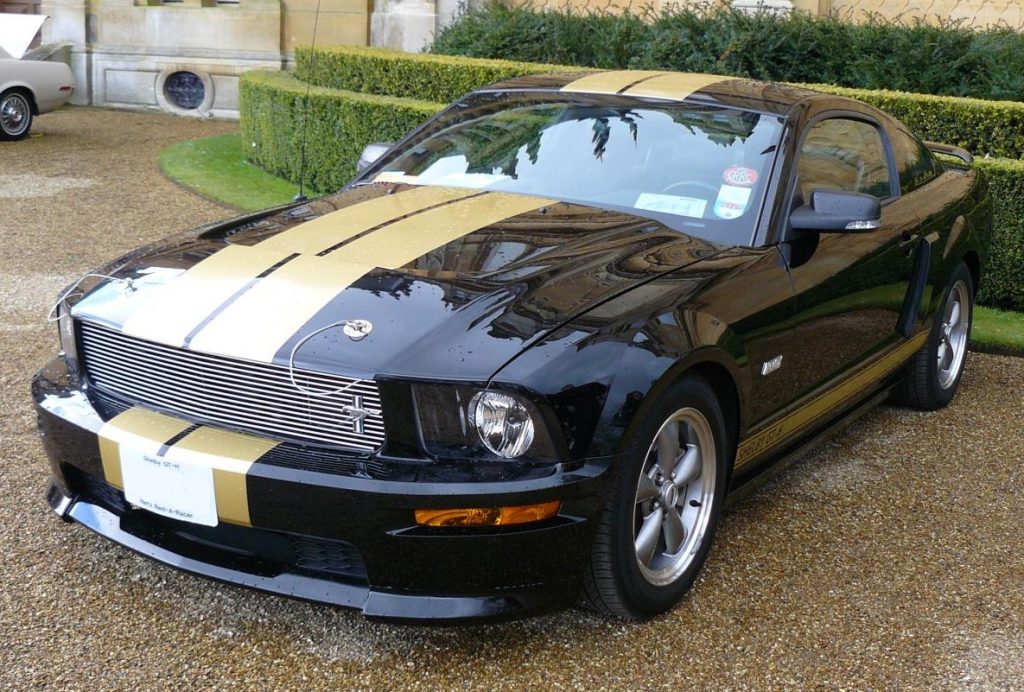
The fifth generation of the Ford Mustang used the S197 codename and lasted from 2005–2014. This brought the Mustang to the new D2C platform after it had spent the previous 25 years on the Fox Body platform. The new Mustang incorporated styling elements that harkened back to the 1960s, but still had modern flair from the Fox-4 platforms. The new chassis was once again stiffer and safer, and allowed for better handling, braking, and comfort.
From 2005–2009 the Mustang body stayed largely the same, with the exception of new standard features, but the 2010 Mustang saw a facelifted new redesign. The exterior saw a new front end with a new grille and fascia, larger “powerdome” hood, new headlights, and new taillights. Ford also gave the interior a redesign, which improved quality and appeal. In 2013, the Mustang once again updated its front and hood, with a new fascia and functional heat exchangers on the hood.
The Special Edition Mustangs
In addition to the Shelby Mustang return in 2007, Ford produced a few other high performance variants. They brought back the Cobra Jet and Boss monikers from the 1960s–1970s, as well as the Bullitt from 2001, to much acclaim. The Bullitt lasted from 2008–2009, and included the iconic Highland Green paint, 18 inch wheels, black grille, and gray brake calipers.
Ford produced the Cobra Jet in 2008, 2010, and 2012–2014 as pure NHRA race vehicles. They were not given VINs, meaning they were not made legal for the street, and they used a supercharged version of the modular 5.4 Triton V8 from the 2000 Cobra R making 425 horsepower. Ford made the 2012 Mustang Boss 302 as a one-year only special. Not only did it get a more powerful version of the GT’s 5.0 Coyote engine, but it had significant handling and suspension improvements to make it formidable on the track.
The Return of the Shelby Mustangs
In 2007, the Shelby Mustangs made their long-awaited return with the Shelby GT, Terlingua, GT-H, GT500, and GT500 Super Snake. The GT-H was a throwback to the GT350H from the 1960s, and was available exclusively as a Hertz Rent-a-car. The new Shelby Mustangs were originally built by Ford before being shipped to Shelby American in Las Vegas to be modified. Ford said they brought back the moniker due to overwhelming demand, and they sold relatively well.
2005–2014 Mustang Engine Technical Specifications
| Model Years | Engine | Horsepower | Torque |
| 2005-2010 | 4.0L V6 | 210 horsepower | 240 lb-ft |
| 2005-2009 | 4.6L V8 (GT) | 300 horsepower | 320 lb-ft |
| 2007 | 4.6L V8 (GT-H) | 325 horsepower | 330 lb-ft |
| 2007-2009 | 5.4L V8 (GT500) | 500 horsepower | 480 lb-ft |
| 2007-2008 | 4.6L V8 (Shelby GT) | 319 horsepower | 330 lb-ft |
| 2007-2009 | 4.0L V6 (Terlingua) | 375 horsepower | 340 lb-ft |
| 2007-2010 | 5.4L V8 (Super Snake) | 800 horsepower | 600+ lb-ft |
| 2008 | 4.6L V8 (Bullitt) | 315 horsepower | 325 lb-ft |
| 2008-2009 | 5.4L V8 (GT500KR) | 540 horsepower | 510 lb-ft |
| 2010 | 4.6L V8 (GT) | 315 horsepower | 325 lb-ft |
| 2010 | 5.4L V8 (GT500) | 540 horsepower | 510 lb-ft |
| 2011-2014 | 3.7L V6 | 305 horsepower | 280 lb-ft |
| 2011-2012 | 5.0L V8 (GT) | 412 horsepower | 390 lb-ft |
| 2011-2013 | 5.0L V8 (GT350) | 525 horsepower | 490 lb-ft |
| 2011-2012 | 5.4L V8 (GT500) | 550 horsepower | 510 lb-ft |
| 2011-2012 | 5.4L V8 (Super Snake) | 750 horsepower | 590 lb-ft |
| 2012-2013 | 5.0L V8 (GT350) | 430 horsepower | 470 lb-ft |
| 2012-2013 | 5.0L V8 (GT350) | 624 horsepower | 500+ lb-ft |
| 2012-2013 | 5.0L V8 (Boss) | 444 horsepower | 380 lb-ft |
| 2012 | 3.7L V6 (GTS) | 475 horsepower | 412 lb-ft |
| 2013-2014 | 5.0L V8 (GT) | 420 horsepower | 390 lb-ft |
| 2013-2014 | 5.8L V8 (GT500) | 662 horsepower | 631 lb-ft |
| 2014 | 5.0L V8 (Shelby GT) | 430 horsepower | 470 lb-ft |
| 2014 | 5.0L V8 (Shelby GT) | 525 horsepower | 490 lb-ft |
| 2014 | 5.0L V8 (Shelby GT) | 624 horsepower | 500+ lb-ft |
Fifth Generation Engines and Performance
For the fifth generation Mustang, Ford used two primary power plants for each the standard Mustang and the GT. From 2005–2010, the base Mustang used a 4.0L V6 producing 210 horsepower and 240 lb-ft of torque. From 2011–2014, this switched to a smaller but more powerful 3.7L V6 making 305 horsepower. The 4.0 V6 was a SOHC engine that had been in production since the mid-1990s. The 3.7L V8 was from the Cyclone engine family, and is also known as the Duratec 37.
As for the Mustang GT, from 2005–2010 Ford continued to use the modular 4.6L V8, making 300–315 horsepower. This changed in 2011, when they brought back the 5.0 V8 to the Mustang for the first time since 1995. The new engine was known as the Coyote V8, and produced 412–420 horsepower. The 2012-2013 Boss 302 V8 used the Coyote power plant but had several modifications. These were meant to allow the Boss Coyote to have a higher 7,500 rpm red line, and made and improved 444 horsepower.
The Shelby Engines
For the Shelby American power plants, Ford used modified versions of Ford’s modular 4.6, 5.0, and 5.4 V8 engines. The most powerful example was the Shelby GT500 Super Snake package from 2007–2010, which produced a gargantuan 800 horsepower (or 900 horsepower with the anti-hop upgrade) through either a Shelby/Kenne Bell or Whipple supercharger.
From 2007–2014 Shelby produced the GT500 with either the 5.4 or 5.8 V8 engines, and from 2011–2013 produced the highly popular GT350. The GT350 used a supercharged version of the 5.0 Coyote, which could make either 430 horsepower (naturally aspirated), 525 horsepower, or 624 horsepower. They used the same power plant in the 2014 Shelby GT.
Shelby only produced two Mustangs with V6 engines, the 2007–2009 track focused Terlingua Mustang, and the 2012 Mustang GTS. Shelby supercharged both of the V6s to boost power output, with the Terlingua making 375 horsepower and the GTS 475 horsepower.
Fifth Generation Ford Mustang Production Numbers
| Model Year | Bodystyle | Production Total |
| 2005 | Mustang | 159,587 |
| 2006 | Mustang | 165,762 |
| 2007 | Mustang | 174,417 |
| 2008 | Mustang | 111,125 |
| 2009 | Mustang | 46,619 |
| 2010 | Mustang | 81,058 |
| 2011 | Mustang | 69,901 |
| 2012 | Mustang | 88,392 |
| 2013 | Mustang | 84,705 |
| 2014 | Mustang | 134,082 |
Sixth Generation Ford Mustang (S550)
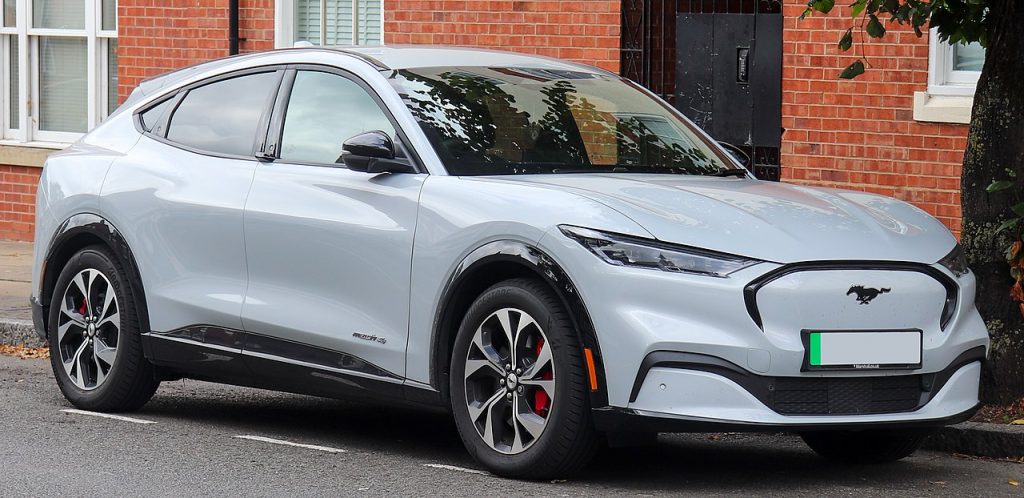
The current generation of the Ford Mustang began in 2015 and is set to conclude with the end of the 2023 model year. It uses the S550 codename, and features a significant redesign from the prior generation. The Mustang got sleeker and less boaty, adding sharper curves and completely refined front end. For the first time, all Mustangs have independent rear suspension. The 2015 Mustang marked the official 50th year of the Mustang, which debuted as a 1965 model (though enthusiasts consider the first units to be of the 1964.5 model year).
Exterior wise, the Mustang and Mustang GT have looked relatively similar during the S550 run, with only minor aero improvements to the hood and rear. The Shelbys returned for the S550 Mustang in full-force, producing the Shelby GT, GT350, and GT500, as well as the Hertz, King of the Road, and Code Red variants of the GT500.
From 2019–2020, Ford once again revived the Bullitt Mustang moniker, giving it a more powerful version of the Mustang GT Coyote V8 engine. In 2021, Ford replaced the Bullitt variant with the Mach 1, another resuscitation of an old nameplate.
The Mustang Goes Electric with the Mach-E
In 2021, Ford broke a lot of hearts when they introduced the first electrified version of the Mustang, which they call the Mustang Mach E. This was the first Mustang ever to not have an internal combustion engine, and signified Ford’s entry to the electric performance vehicle marketplace. In addition to being electric, the Mach E also classifies as a crossover SUV rather than a compact coupe. For its inaugural model year in 2021, the Mach-E won the North American SUV of the Year award.
The Mach E is also the first four-door Mustang, but it still largely follows styling cues from the S550 two-door coupes. Ford offers four flavors of the Mach-E: Select (base model), California Route 1 Edition, Premium, and GT. They also offer a performance package for the GT.
The lower two trims are the Select and the Premium, which both come standard with RWD and a 72-kWh battery with a 250 mile range. They make 266 horsepower and 317 lb-ft of torque. Standard in the California Route 1, and optional in the Premium, is eAWD and a 88-kWh battery with a 312 mile range, and dual-motor producing 290 horsepower and 428 lb-ft of torque. The GT stands in a class of itself, with a 91 kWh battery and dual-motor that makes 480 horsepower and 600 lb-ft of torque. The performance package boosts torque output to 634 lb-ft on the GT.
2015–2023 Mustang Engine Technical Specifications
| Model Years | Engine | Horsepower | Torque |
| 2015-2017 | 3.7L V6 | 300 horsepower | 280 lb-ft |
| 2015-2017 | 2.3L V6 (EcoBoost) | 310 horsepower | 320 lb-ft |
| 2015-2017 | 5.0L V8 (GT) | 435 horsepower | 400 lb-ft |
| 2015-2020 | 5.2L V8 (GT350) | 526 horsepower | 429 lb-ft |
| 2018-2023 | 2.3L V6 (EcoBoost) | 310 horsepower | 350 lb-ft |
| 2018-2021 | 5.0L V8 (GT) | 460 horsepower | 420 lb-ft |
| 2018-2023 | 5.0L V8 (Shelby GT) | 460-750 horsepower | 420+ lb-ft |
| 2019-2020 | 5.0L V8 (Bullitt) | 480 horsepower | 420 lb-ft |
| 2020-2023 | 2.3L V6 (EcoBoost HPP) | 330 horsepower | 350 lb-ft |
| 2020-2022 | 5.2L V8 (GT500) | 760 horsepower | 625 lb-ft |
| 2020-2022 | 5.2L V8 (GT500KR) | 900 horsepower | 700+ lb-ft |
| 2020-2022 | 5.2L V8 (GT500CR) | 1,000-1,300 horsepower | 780-1,1000 lb-ft |
| 2021 | 5.0L V8 (Mach 1) | 480 horsepower | 420 lb-ft |
| 2021-2023 | Mach E RWD | 266-290 horsepower | 317 lb-ft |
| 2021-2023 | Mach E eAWD | 266-346 horsepower | 428 lb-ft |
| 2021-2023 | Mach E eAWD (GT) | 480 horsepower | 600-634 lb-ft |
| 2022-2023 | 5.0L V8 (GT) | 450 horsepower | 410 lb-ft |
| 2022-2023 | 5.0L V8 (Mach 1) | 470 horsepower | 410 lb-ft |
| 2022 | 5.0L V8 (GT-H) | 450 horsepower | 410 lb-ft |
| 2022 | 5.2L V8 (GT500-H) | 900+ horsepower | 650+ lb-ft |
| 2023 | 5.0L V8 (Super Snake) | 825 horsepower | 600+ lb-ft |
Sixth Generation Engines and Performance
For the sixth generation of the Mustang, Ford kept both the 3.7L V6 and 5.0L V8, and added a 2.3L turbocharged I4 “EcoBoost” engine, too. The V6 lasted until 2017, making 300 horsepower until its retirement. Ford has kept the same Coyote 5.0 from the prior generation, though it has continually increased in power. From 2015–2017, it made 435 horsepower – an increase of 15 horsepower over the 2014 model.
In 2018, Ford updated the Coyote engine, boosting horsepower to 460 through a few tweaks and upgrades. Stated power dropped to 450 horsepower for 2022–2023. For the 2019–2020 Mustang Bullitt and 2021–2023 Mustang Mach 1, Ford used a slightly more powerful version of the same Coyote V8.
Starting in 2015, Ford began offering the 2.3L I4 EcoBoost engine as an option in the standard Mustang. It uses a twin-scroll turbocharger, direct-injection, and makes 310 horsepower. Optional is a high performance package, which boosts output to 330 horsepower.
The Shelby Engines
For the 2015+ Shelby Mustangs, Ford has exclusively used variations of the 5.0 Coyote power plant. These include the 5.2 Voodoo V8 inside the GT350 and the 5.2 Predator V8 inside the GT500. The Voodoo was notable for using a flat-plane crankshaft that had a 8,250 rpm and gloriously unique exhaust note. The Voodoo is naturally aspirated, but the Predator uses a 2.65L Eaton TVS Supercharger, pumping out 12 PSI of boost.
Ford rated the naturally aspirated Voodoo at 526 horsepower and 429 ft-lbs of torque. For the supercharged Predator, power jumped up to an astonishing 760 horsepower and 625 lb-ft of torque. But if you thought these were the most powerful Shelby Mustangs available, you would be sorely mistaken.
Apart from the standard Shelby GT500, there are also the King of the Road, Code Red, Super Snake, and Hertz editions. The King of the Road GT500 uses a 3.8L Whipple supercharger to produce 900 horsepower, and has forged pistons, an intercooler, heat exchanger, and Borla exhaust.
The Code Red GT500 is the most powerful Shelby ever, producing 1,000–1,3000 horsepower – and costing over $200,000 without the actual GT500 factored in. To produce the power, Shelby uses twin Xona 7869S Dual Ball Bearing Turbos, an intercooler, heat exchanger, and a host of other upgrades so the chassis can handle the power. With petrol, the engine produces 1,000 horsepower, with ethanol that jumps up to 1,300 horsepower. Shelby produced only 30 total GT500 Code Red units.
Finally, for the Shelby Super Snake, Shelby uses a Whipple supercharged version of the 5.0 Coyote engine rated at 825 horsepower. They also have a convertible speedster version, with a cover for the rear seats.
Seventh Generation Ford Mustang (S650)
Ford announced the seventh generation of the Mustang, presumed to use the S650 codename, on September 14, 2022, at the Detroit Auto show. Details are still relatively unknown for what it will entail, though it suggested that the EcoBoost and Coyote engines will continue to be used in more powerful formats. Rumors put the EcoBoost now at 315 horsepower, while the Coyote will produce an estimated 480 horsepower.
The Mach 1 appears to be discontinued in favor of a new “Dark Horse” model that will reportedly make at least 500 horsepower. The Mach-E Mustang seems likely to continue right along with the S650 Mustang, though it may potentially make more power and have a longer battery range. Production will commence in mid-to-late 2023, with the first models expected out by the end of 2023. Ford already sold the first S650 in January 2023, months ahead of production.
2024 Mustang Engine Technical Specifications (Expected)
| Model Years | Engine | Horsepower | Torque |
| 2024 | 2.3L V6 (EcoBoost) | 315 horsepower (est) | 350 lb-ft (est) |
| 2024 | 5.0L V8 (GT) | 480 horsepower (est) | 430 lb-ft (est) |
| 2024 | 5.0L V8 (Dark Horse) | 500 horsepower (est) | 450 lb-ft (est) |
| 2024 | Mach E RWD | 266-290 horsepower | 317 lb-ft |
| 2024 | Mach E eAWD | 266-346 horsepower | 428 lb-ft |
| 2024 | Mach E eAWD (GT) | 480 horsepower | 600-634 lb-ft |
Ford Mustang Legacy
For six (soon to be seven) generations, the Ford Mustang has solidified itself as the top pony car on the American market. Its combination of refined styling, high performance engines, affordable pricing, and endless list of options and packages, have won buyers over for almost 60 years. The newest Mustangs are some of the most powerful production cars ever built, doing more than justice to the Mustang name and heritage.
In addition to the standard Mustang, the Boss, Bullitt, Mach 1, SVO, SVT, and Shelby Mustangs have all become memorable parts of the car’s lore. Using even higher performance engines and upgraded suspension systems, these cars have transformed regular Mustangs into track ready and midnight warrior beasts. Let us know what you think about the Ford Mustang in the comments below!
For the first three generations of the Ford Mustang, check out our other article here.
*Thanks to Mike Mueller’s “The Complete Book of Ford Mustang” for car, engine, and production information.
** Thanks to John Gunnell’s “Standard Catalog of Ford, 1903-2023” for car and engine information.

